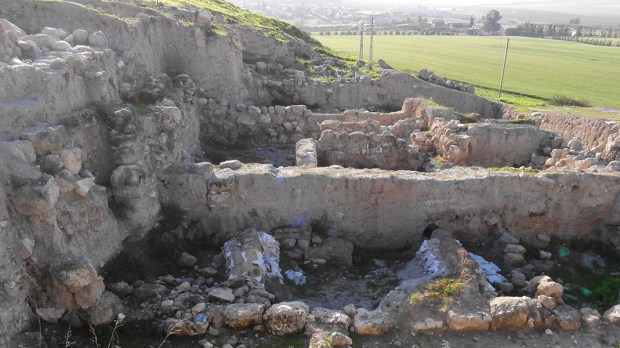Archaelogists have found a stone near Jerusalem that is very suggestive of one described in Scripture as being the resting place of the Ark of the Covenant.
The Ark of the Covenant contained the tablets of the Ten Commandments given to Moses on Mt. Sinai.
The stone was uncovered at a site where archaeologists were exploring an ancient temple at Beth Shemesh, near the Israeli capital.
“This would be a rare case in which we can merge the biblical narrative with an archaeological find,” Dr. Zvi Lederman, a Tel Aviv University archaeologist who leads the Beth Shemesh dig, told the Israeli newspaper Haaretz.
The paper said that if the hypothesis of Lederman and his colleague, Shlomo Bunimovitz, is true—that the unusual stone table is connected to the biblical story of the ark—”the find would be evidence that the Bible contains kernels of historical truths from much earlier periods than most experts previously thought.”
The temple uncovered by the dig dates to the 12th century B.C., faces east, and opens onto a platform commonly used for religious ceremonies. Haaretz continued:
Inside the putative temple, archaeologists found two large round concave stones into which gutters had been carved. These may have been used for libations of wine or were perhaps miniature olive presses to produce sacred oil, Lederman theorizes. The researchers also found a treasure trove of decorated pottery jugs and cups as well as a pile of animal bones – again, signs of ritual activity, Bunimovitz says.
Significantly, no pig bones were found. Jewish law prohibits the eating of pork.
The archaeologists speculate the building was destroyed some time in the mid-12th century B.C., possibly by the Philistines. This was an era of pre-monarchic Israel, when judges like Samson and Deborah ruled over the loosely united 12 Hebrew tribes, according to Scripture. Beth Shemesh is described as a border town between the Israelites and the Philistines, in a region where the two peoples often clashed, Haaretz said.
What might have given this sanctuary its importance was the stone—a massive slab resting horizontally on two smaller rocks. According to Ledeman, “the enigmatic table fits the timeframe and profile of the ‘large stone’ on which, according to the First Book of Samuel, the Ark of the Covenant rested when it was brought to Beth Shemesh after being recovered from the Philistines.” Haaretz went on:
According to the Bible, after the Israelites settled in the Promised Land, the ark was placed in Shiloh, north of Jerusalem, but was later captured by the Philistines in battle. God then punished the Philistines for their arrogance, afflicting them with illness and plagues until their leaders placed the holy artifact on a cart and led it back to the Israelites along with gifts of gold to appease the rival deity. And here is where Beth Shemesh enters the story of the ark: “Now the people of Beth Shemesh were reaping their wheat harvest in the valley; and they lifted their eyes and saw the ark, and rejoiced to see it. Then the cart came into the field of Joshua of Beth Shemesh, and stood there; a large stone was there. So they split the wood of the cart and offered the cows as a burnt offering to the Lord. The Levites took down the ark of the Lord and the chest that was with it, in which were the articles of gold, and put them on the large stone.” (1 Samuel 6:13-15). The story goes on to tell how God struck down some of the inhabitants of Beth Shemesh who had dared to look inside the ark (so no, the Indiana Jones movie didn’t come up with that idea). It was then taken to Kiriath Yearim, where it stayed for 20 years before being taken to Jerusalem by King David.
Lederman warned that there are several inconsistencies between the biblical story and the find in Beth Shemesh. But his colleague, Bunimovitz, says the discovery of the stone suggests that whoever wrote the story of the ark, probably centuries later, was aware of a tradition of a large stone in Beth Shemesh that functioned as an important focus of worship back in the 12th century B.C., and incorporated it into the biblical text.

